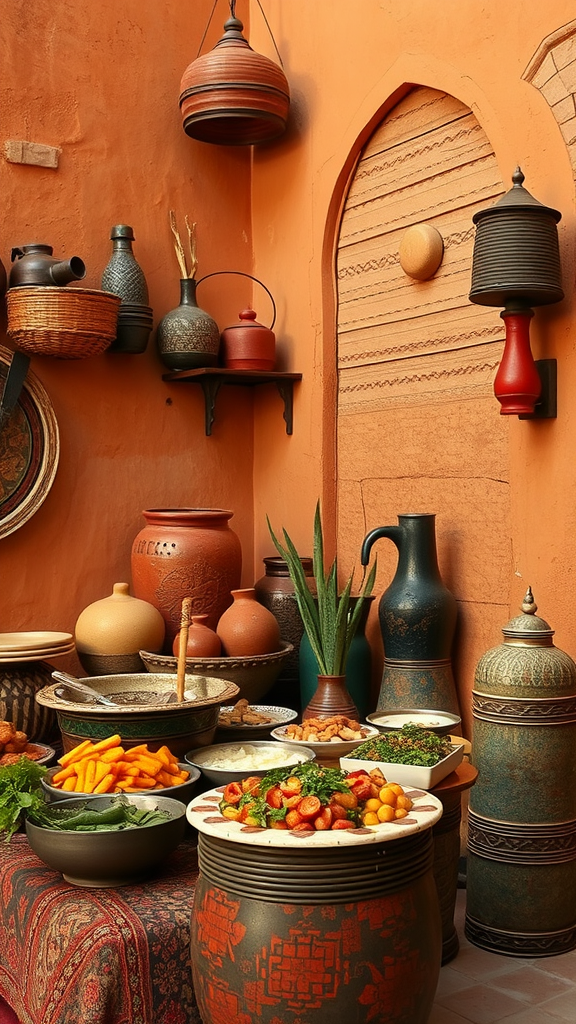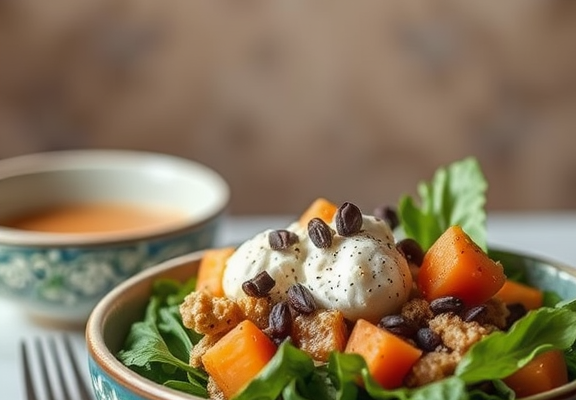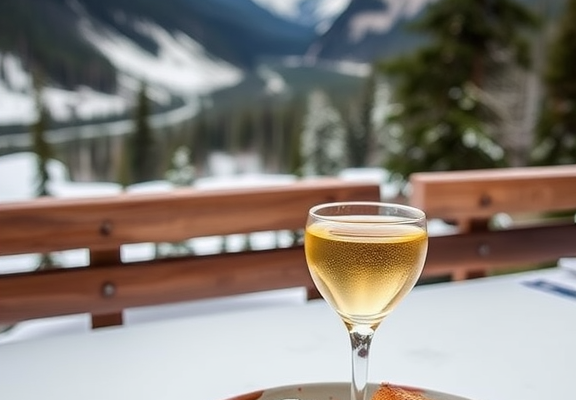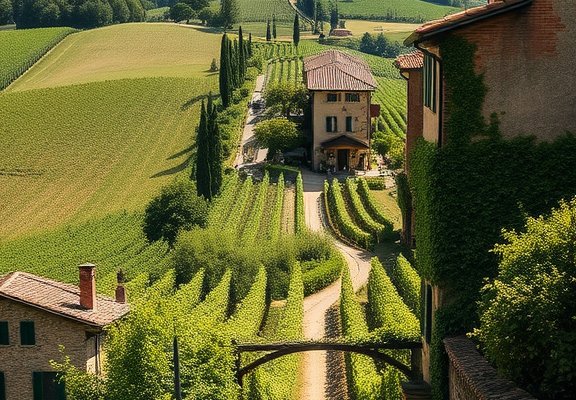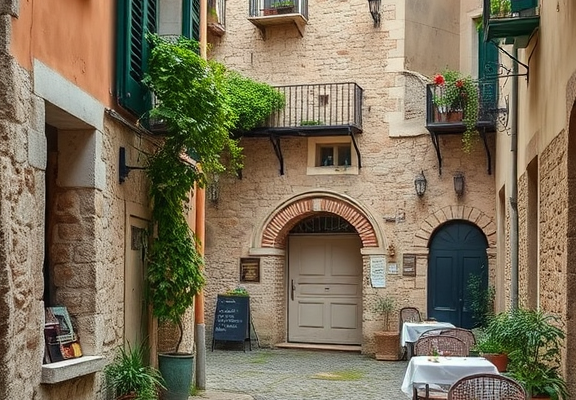Exploring Cultural Food Experiences in Morocco: A Culinary Journey Through Tradition
When you think of Morocco, vibrant colors and lively music might come to mind. However, it’s the food that weaves the true tapestry of Moroccan culture. With its rich history and diverse influences, the culinary landscape here offers a unique experience that you won’t want to miss. Each dish tells a story, inviting you to partake in a centuries-old tradition.
Thank you for reading this post, don't forget to subscribe!One of the most iconic experiences you must indulge in is enjoying a traditional Moroccan tagine. This slow-cooked stew, named after the earthenware pot it’s cooked in, blends spices, meats, and vegetables into a delightful symphony of flavors. As you savor each bite, take note of the interplay between sweet and savory—like the addition of dried fruits and nuts to lamb or chicken. The experience of sharing tagine with friends or family brings a communal aspect that is essential to Moroccan dining culture.
Another staple that speaks volumes about Morocco’s culinary heritage is couscous. Often considered the national dish, it is a fluffy grain made from semolina wheat. Traditionally served on Fridays, couscous is generally topped with a variety of vegetables, and meats, and is often accompanied by a hearty broth. What makes this dish unique is its communal presentation—friends and family gather around a large platter, each person taking their portion, which emphasizes the Moroccan value of sharing and togetherness.
The bustling souks (markets) in Marrakech and Fes offer an exhilarating food experience as well. Walking through the narrow streets, aromas of spices fill the air, drawing you toward colorful stalls brimming with fresh produce, dried fruits, and spices. You can join locals in tasting street food delicacies such as briouates (savory pastries) and kebabs, cooked right in front of you. Sample a harira soup, a thick, flavorful concoction made with tomatoes, lentils, and chickpeas, often enjoyed during Ramadan to break the fast. These moments in the market let you connect directly with local culture and stories.
No culinary journey in Morocco would be complete without a bite of mint tea. Known as the national drink, this sweet and refreshing beverage symbolizes hospitality. Traditionally served in ornate glasses, mint tea is more than just a drink; it’s a ritual. Sharing tea in Morocco signifies friendship and respect, and the preparation is an art form in itself. You’ll often see the host pouring the tea from a height to create bubbles, enhancing its flavor and presentation. Participating in this ritual creates a connection not only with your host but also with the essence of Moroccan culture.
If you’re adventurous, exploring the local spice markets can deepen your understanding of Moroccan cuisine. Fragrant spices like cumin, coriander, saffron, and ras el hanout mingle in the air, each with its own distinct profile. Many Moroccan dishes rely on these spices, and learning about them offers insight into the region’s history and cultural influences. You might even consider taking a cooking class to learn how to incorporate these spices into your own cooking once you return home.
Don’t miss out on indulging in Moroccan sweets. Treats like baklava and maamoul (stuffed cookies) are commonly served during special occasions, adding a touch of sweetness to your culinary adventure. Often flavored with almonds and honey, they embody Moroccan artistry and care in food preparation.
Ultimately, exploring cultural food experiences in Morocco invites you into a world where food acts as a bridge between people and traditions. From hearty tagines to delicate pastries, every meal is a storytelling medium. Through this culinary journey, you’ll unveil the soul of a nation deeply anchored in tradition, community, and flavor.
By immersing yourself in these cultural food experiences, you don’t just taste Morocco; you feel it. Engaging with local delicacies and culinary practices will enrich your understanding and appreciation of this vibrant country. Whether you are sharing a meal with locals or exploring bustling markets, every moment spent sharing food is a moment spent discovering Morocco itself.
The Role of Moroccan Spices in Enhancing Cultural Identity and Cookery
Morocco is a land known for its vibrant culture, rich history, and unparalleled culinary traditions. At the heart of Moroccan cuisine lies an impressive array of spices, each with its unique story and purpose. The role of these spices goes beyond flavor, acting as a bridge between generations and a tapestry that weaves together the diverse cultural identity of the Moroccan people.
Spices are the soul of Moroccan cookery. A typical Moroccan meal is incomplete without a masterful blend of spices, such as cumin, coriander, paprika, and saffron. These spices not only enhance the taste of dishes but also reflect the nation’s cultural landscape. The significance of spices can be seen in how they are integrated into everyday meals as well as extravagant feasts.
Consider the traditional tagine, a slow-cooked stew named after the earthenware pot it is prepared in. The ingredients vary by region, but the spices remain a constant feature. Here are some popular spices and their roles:
- Cumin: A staple in Moroccan cooking, it adds warmth and earthiness.
- Cinnamon: Used in both sweet and savory dishes, it symbolizes hospitality and the blending of cultures.
- Ras el Hanout: A unique blend of up to 30 spices, it embodies the complexity of Moroccan culinary traditions.
- Saffron: Known as the world’s most expensive spice, it lends a luxurious touch to dishes and represents the country’s agricultural heritage.
When you visit Morocco, you’ll notice that food is a communal experience. Sharing a meal is not just about nourishment; it’s about bringing families and friends together. Spices play a vital role in these gatherings, enhancing not only the food but also the bonds between people. Each spice tells a tale of history, trade, and cultural exchange, reflecting the influences of Berber, Arabic, and French traditions.
The spice markets, or souks, are a sensory experience that captivates locals and tourists alike. The vibrant colors of the spices, along with their alluring aromas, create an environment that feels alive with culture. When you walk through a souk, you can sense how deeply rooted spices are in the Moroccan way of life. Local vendors enthusiastically share their knowledge about each spice, explaining how to best use them in everyday cooking.
Cooking classes have become a popular way for travelers to engage with Moroccan cuisine. During these hands-on experiences, participants learn how to blend spices to create dishes that are authentic and full of rich flavors. This not only provides a taste of Moroccan culture but also reinforces how integral spices are to the culinary identity of the country.
In addition to their culinary uses, Moroccan spices have been treasured for their medicinal properties for centuries. Traditional remedies often incorporate various spices to heal and enhance well-being. For example, ginger is commonly used to aid digestion, while turmeric is praised for its anti-inflammatory qualities. This medicinal aspect adds another layer to the cultural identity of Morocco, showcasing the holistic approach to health and wellness that has existed for generations.
Each spice carries a history that is as complex as Morocco itself. The Silk Road brought together a confluence of cultures and traditions, introducing new spices that would forever change cooking in the region. As you learn more about these spices, you also discover the shared stories of communities who relied on trade and collaboration to flourish.
The continuation of spice traditions is essential for preserving Morocco’s culinary heritage. Today, many chefs are experimenting with traditional Moroccan spices, infusing them into modern dishes while respecting their roots. This evolution in cookery not only keeps the culinary scene vibrant but also serves as a reminder of the enduring significance of these spices in shaping cultural identity.
Culinary tourism has also elevated this appreciation for Moroccan spices, as food lovers from around the globe seek out authentic experiences. The exploration of spices has transformed into a quest for understanding not just how to cook Moroccan dishes, but also the stories behind the spices that flavor them.
In a world that often seems disconnected, the spices of Morocco unite people through their shared love for food and cultural exchange. They are a testament to the colorful tapestry that is Moroccan identity. By engaging with the spices, you too can become part of that narrative, savoring the rich culinary landscape that has been crafted over centuries.
Conclusion
Embarking on a culinary journey through Morocco is not just about enjoying delicious dishes; it’s a deep dive into the vibrant culture and rich traditions that define this captivating country. Each meal becomes a story, narrating the historical influences that have shaped Moroccan cuisine over centuries. As you explore traditional meals like tagine and couscous, you’re also savoring the very essence of Moroccan hospitality, where sharing food enhances bonds between family and friends.
The mastery of Moroccan spices plays a crucial role in this culinary narrative. From fragrant saffron to spicy harissa, each spice does more than flavor dishes; it connects you to Morocco’s diverse landscape and its myriad cultures. These spices transform meals into vibrant symbols of identity, reflecting the country’s historical interactions with various civilizations—from the Berbers to the Arabs and beyond.
Whether you find yourself in a bustling medina or a quaint village, the cultural food experiences in Morocco offer a unique window into its soul. They remind us that food is not just sustenance; it’s a celebration of heritage and an invitation to connect with others. So, when your taste buds dance with the distinct flavors of Moroccan cuisine, remember that you are partaking in something far greater than just a meal—you’re engaging in a living tradition that continues to thrive and evolve. Experience the essence of Morocco through its food, and let it inspire and enrich your understanding of this beautiful nation.

